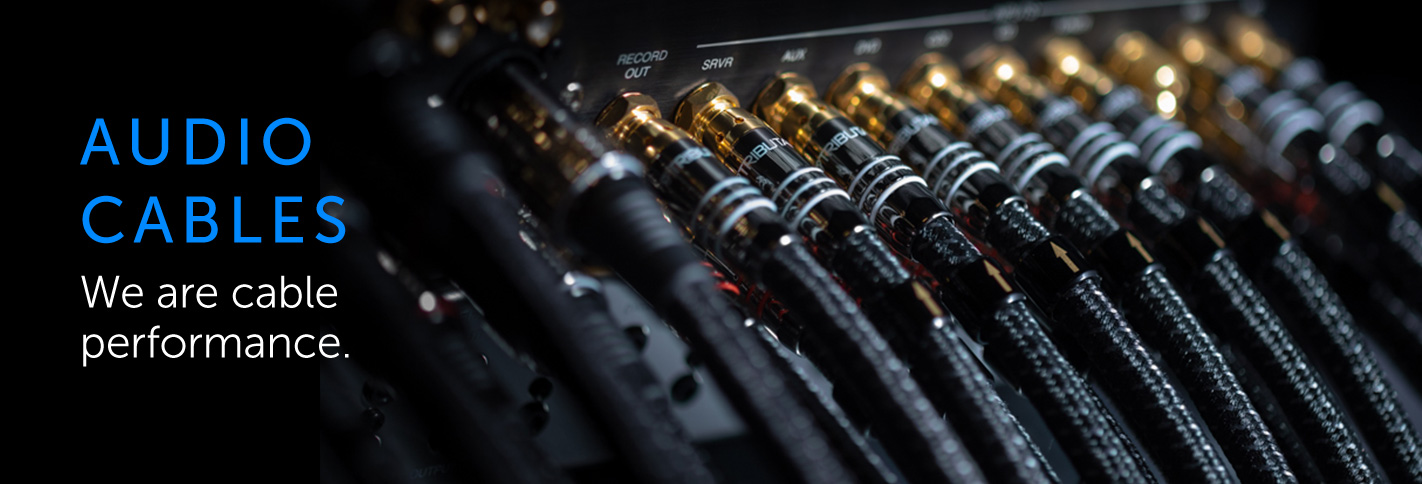
Tributaries complete line of audio, speaker and power cables were developed exclusively for Tributaries by celebrated cable designer Jay Victor. Using some of the same design principles from Clarus Audiophile cables, it took 3 years to complete the engineering and cosmetic design to offer this comprehensive family of cables to the market.
Tributaries cables incorporate a host of patented technologies. Beginning with copper made specifically for audio applications; conductors are multi-gauge in design with individually insulated strands and precision impedances. The Tributaries collection is complemented by painstakingly meticulous hand-craftsmanship.Copper
One of the most important considerations in developing audio cables is the grade of copper. Typical high quality electrical grade copper has a purity level of 2N and approximately 1500 crystal per foot. Signals crossing thru these crystal boundaries result in loss and distortion. The next level above this is oxygen-free copper (OFC), the purity of OFC varies. Tributaries uses 2 grades: 3N OFC and a high-conductivity oxygen-free copper (HC-OFC) with 4N of purity. Both are extruded in an oxygen free environment resulting in only 400 crystals per foot. Series 8 cables use copper with purity of 5N called “linear-crystal” copper (LC-OFC). LC-OFC is carefully drawn to produce only 70 crystals per foot, a vast improvement resulting in less loss and distortion.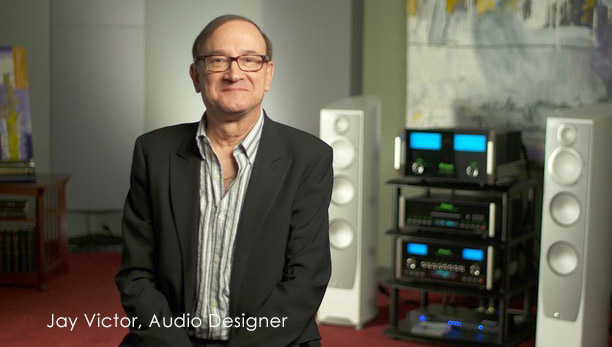
The Expert in Cable Design
Jay Victor, The engineer behind the development of the Tributaries Audio, Power and Speaker Cables, is a holder of approximately 50 patents for cable geometry. “I am a musician and a life-long music fanatic. Being a technically-minded person, and an Engineer, it is inevitable that Hi-Fi equipment would become a major preoccupation. If music is a major value in your life, then the realistic reproduction of it becomes an obsession. This is what goes into the cables that I design; a relentless pursuit of perfection in reproducing the sound of real music.”Insulated Multi-Gauge Conductors
Tributaries uses solid conductors in its audio cable design. Although stranded cables are valued for their flexibility, the signal can jump from strand to strand in an undesirable manner causing distortion. Another undesirable effect is oxidation which can quickly spread between strands and cause a diode effect impeding signal flow. Conductor size also has an influence on sound. Large conductors transmit signals with less resistance than smaller ones and will also more accurately reproduce the lower frequencies; medium gauge conductors, the mid-frequencies; and fine gauge conductors the high frequencies. Most theories cite skin effect and flux density as reasons for this phenomenon. Further, insulating gauges from one another result in greater clarity.Cable Geometry
Tributaries audio cables use a twinaxial design. Twinaxial cables have two equally balanced conductors precision twisted and surrounded by a shield. Conductors are insulated using Polyethylene. Polyethylene is chosen because its transparency is similar to Teflon but without the harshness in the high frequencies. Polyethylene is flexible and has a sound quality that is warm and balanced. The shields have 360° coverage to keep noise from entering the signal path. Series 6 and 8 cables include copper braided shields with lower resistance for trapping induced noise current. In this design the signal and return have dedicated separate conductors and the shield is free to be connected at the source end only eliminating EMI & RFI induced noise from entering the receiver. The best balanced cables are triple balanced with three equally balanced twisted conductors surrounded by a shield. In a balanced system using dedicated conductors for the positive, negative and ground with an additional shield connected only at the source end delivers audible improvements by lowering the noise allowing you will hear more of the recorded music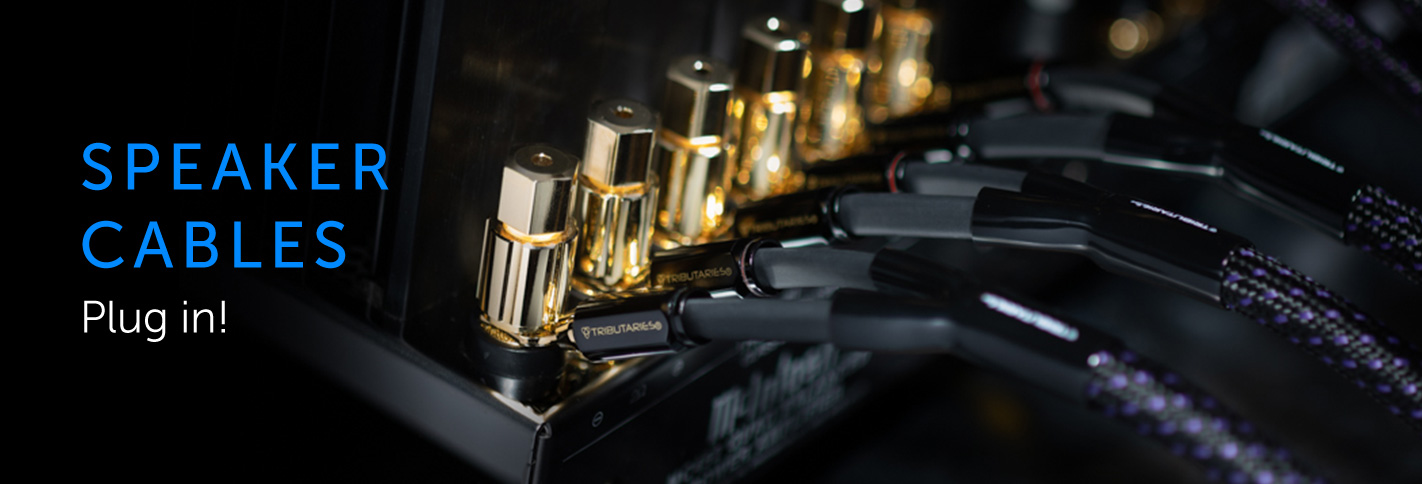
Tributaries high performance speaker cables are a unique design by Jay Victor optimized for superior sound quality. Starting with the same conductor criteria as Tributaries audio cables; speaker cable designs incorporate high performance copper with insulated multi-gauge conductors sharing the same sonic traits resulting in a sound which is more frequency balanced.
Special attention to cable geometry is given to the design of speaker cables. Speaker cables carry high current signals that are susceptible to magnetic fields. As a signal travels along a wire it creates a magnetic field that increases with signal voltage. This self-inductance impedes the signal by virtue of its inductive reactance. Star-Quad design cancels magnetic fields and improves the sound quality of your system.Star-Quad Geometry
Tributaries Series 4, 6 and 8 speaker cables all include a Star-Quad design. Star-Quad speaker cables are designed with four conductors, all wound together, in a “positive, negative, positive, negative” configuration. The cable is produced such that all 4 wires are evenly twisted together keeping each conductor the same distance from the center and ensuring each positive conductor is next to each negative conductor. The net result is the cancellation of opposing electromagnetic fields generated by each conductor pair. This design improves the system’s performance by preventing EMI noise from entering and distorting the signals in nearby low level audio, video or digital cables. Another benefit of the Star Quad design is the reduction of the cable’s inductance, again, improving the cables electrical performance and reducing the distortion it produces.Maximum Wire Lengths for Two Conductor Copper Wire

Resistance
Resistance is another consideration when choosing a speaker cable. In simple terms: the larger the diameter of the cable or conductor; the lower the resistance. Cable resistance is expressed in ohms per unit. For instance, 500 feet of 16-gauge wire has a resistance of about 4 ohms. With speaker cables this becomes an issue. Because speakers exhibit input impedances in the range of 2 to 8 ohms, the resistance of the cable can add significantly to the overall load. For example, if a 4-ohm speaker is connected to an amplifier with a cable that exhibits a 4-ohm resistance, the cable will dissipate half of the amp’s power before it even gets to the speaker! Tributaries offers a full line of speaker wire with gauges from from 11AWG to 16 AWG for your consideration. Below is a handy guide for choosing the correct size speaker wire for your unique installation.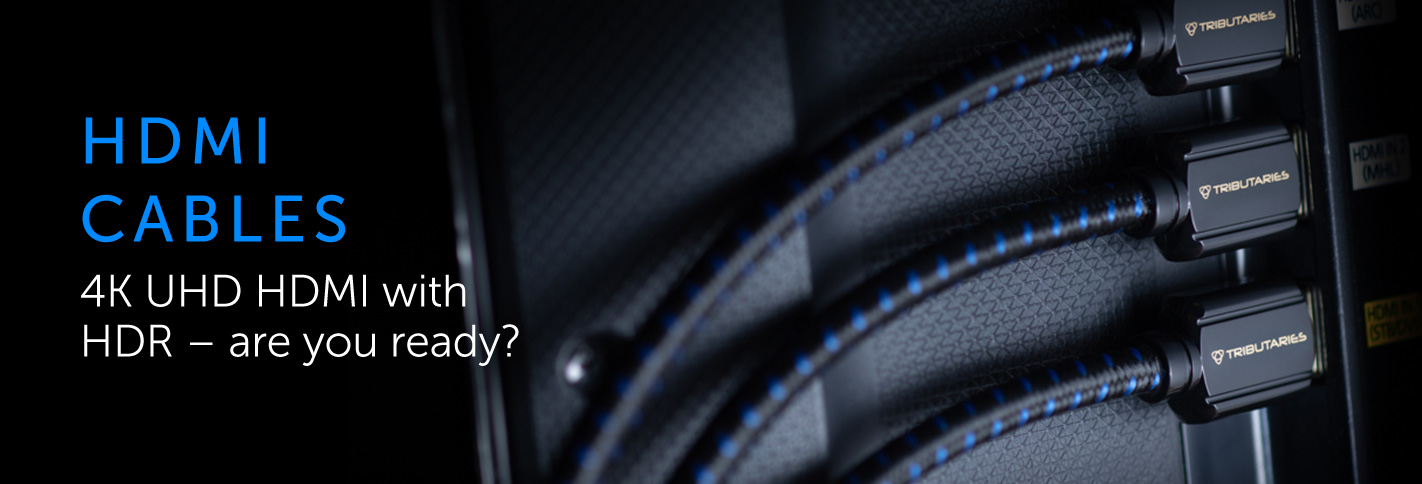
HDMI Performance Capabilities
Tributaries only offers the highest performance 48G HDMI cables that are fully compliant with HDM 2.1 specifications - transport HDMI data rates up to 48Gbps, with resolutions of up to 8K and 10K, frame rates up to 120fps, Color Depths up to 16-bit and Color Sampling up to 4:4:4. The other features in v2.1 are: Dynamic HDR and eARC, Quick Media Switching (QMS) for delay-free source switching; For Gaming – Auto Low Latency Mode (ALLM), Variable Refresh Rate (VRR) and Quick Frame Transport (QFT).Focus on eARC and Dynamic HDR
eARC –is a much more robust audio delivery system than the original ARC. eARC supports 5.1 and 7.1 systems as well as 32 channels of audio and eight channels of 192 kHz, 24-bit uncompressed 38Mbps data streams. It also supports DTS-HD Master Audio™, DTS:X®, Dolby® TrueHD, and Dolby Atmos®. eARC can deliver a substantially improved surround sound experience with more immersive and nuanced audio. Dynamic HDR provides enhanced video images for deeper blacks and brighter whites with greater detail in both the dark and bright parts in the same image, While Standard Dynamic Range (SDR) provides an average level of black to white contrast for an entire movie, Dynamic HDR presents a black to white contrast for each frame of a movie bringing scenes closer to realism.Testing 48G HDMI Cables
At Tributaries, testing cables is serious business. Before packaging and shipping to our dealers, we hand-test each and every HDMI cable. We do our quality control testing in our facility rather than have you do it in your customer’s homes. Tributaries is the only company in our industry that performs 100% HDMI cable testing. You can’t purchase a defective HDMI cable from Tributaries. To perform the test, Tributaries will be using the new Murideo Fresco 12-G HDMI and HDCP Generator that will produce a 40Gbps signal of 8K/60fps/12-bit Color/4:2:0 displayed on a 48G display.DPL Labs
The new HDMI v2.1 requires a dramatic increase in data rates to 48Gbps. To perform the tests required that meet the specifications of HDMI v2.1, DPL Labs acquired and implemented the necessary high-performance test equipment. Tributaries UHDAOC 48G Active Optical cable has earned the DPL Labs 48G Seal of Approval.Tributaries: Totally Tested, Tried and Trusted!
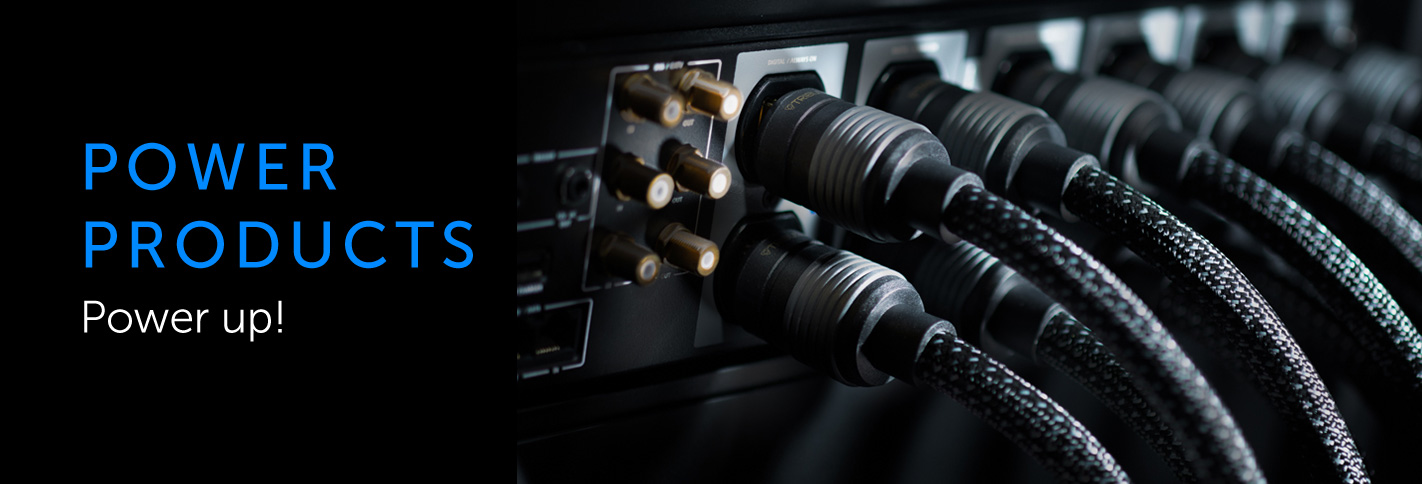
Hearing is believing. We guarantee Tributaries power cables will provide audible and visual improvements to your system. Tributaries power cables are optimized for 60Hz with insulated solid conductors of sufficient size to favor low frequencies AC signals to support current flow and signal dynamics. For maximum noise reduction alternating lays in cable twisting cancel out magnetic fields eliminating distortion. Triple shielding from RF and EMI noise results in improvements by lowering the noise floor allowing you to hear more and see more recorded information.
Tributaries line of power products were designed to protect and enhance the performance of your expensive electronic equipment. Today most home electronics incorporate sensitive microprocessors that are susceptible to damage caused by power surges, spikes and brown out conditions. Noise is everywhere whether it is Electromagnetic or Radio Frequency Interference, it can be severe enough to adversely affect picture and sound quality in home electronic equipment. By incorporating Tributaries power products into your system you can be assured your system is safe and will perform at its best.Surge Suppression
Tributaries power products are designed with the patented X3 MOV. It is capable of suppressing more energy and dissipates heat faster than other design. More importantly, the patented high-temperature ceramic casing is capable of isolating and containing the excessive heat buildup that could occur during an abnormal surge condition. In the event of a catastrophic surge, Tributaries power is additionally protected by dual temperature fuses that open the circuit and disconnect electronics from the AC line. This will result in the power manager, strip or in-wall device self-sacrificing to protect your equipment. Tributaries power products provide you with the ultimate safety protection for your valuable electronics.Under/Over Voltage Protection
Electrical components can also be damaged by under voltage (brownout) conditions. Sensitive parts can be damaged and power supplies can overheat. The microprocessor controlled PWRI-PRO is designed to protect against both over voltage and under voltage conditions. If the incoming voltage exceeds 135 volts, the unit will shut down outlets automatically resetting when the voltage drops back to 130 volts. If the incoming voltage drops below 90 volts, they will shut down, automatically resetting when the voltage returns to 95 volts.Line Filtering & Isolation Circuits
Tributaries power products feature active filters to keep electronic noise from contaminating your A/V system’s delicate audio and video signals. Appliances and other electrical equipment in today’s homes contain motors and micro-processors that generate electronic noise. As these appliances cycle on and off, extraneous noise is generated and propagated throughout the home’s AC electrical system. By greatly reducing this noise, Tributaries power products ensure your electronics will yield significant performance improvements including increased dynamic range, reduced harshness and the emergence of low level details that were previously masked by noise.

